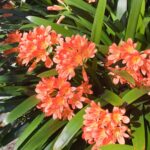Root rot is a disease that can affect a range of plants in your garden and which can spread through the soil. It can kill plants in a very short space of time and can be difficult to control. Some plants are very susceptible to this disease. Don Burke recently looked at a product which will help in the control and prevention of root rot.
What is root rot?
Root rot is the common name for phytophthora root rot (Phytophthora spp.), a fungal disease which infects fine roots and root hairs of many plants. It is spread throughout the garden where there are moist soils.
- Symptoms include: wilting (although the plant is not in need of water)
- yellowing leaves
- the sudden dying back of some or all of the plant
- the plant becoming loose in the soil
- stem lesions appearing near the base of the plant (for example with citrus). Gum is released from fissures in the bark of the plant in woody species.
- affected roots becoming a soggy dark brown colour and brittle instead of the normal pale colour.
- plant death (especially after wet conditions).
- This disease also affects pot plants but the plant may become infected well before symptoms are displayed.
Plants affected?
Many plants are affected by root rot and range from small plants such as strawberries through to larger trees. Many Australian native plants and plants in the protea family can be very susceptible to root rot problems especially in poorly drained soils. Particularly susceptible plants include boronias, macadamias, waratahs and proteas.
Treatment
Recommended treatments have included fungicides such as Fongarid, which are very expensive to apply and can be toxic to other organisms.
Now on the market is a phosphonate fungicide sold as Phosacid 200 or Foli-R-Fos 200 which has phosphorous acid as its active ingredient. Phosphorous acid (different from phosphoric acid) eventually breaks down to produce phosphate and has no serious effects on the environment.
Phosacid and Foli-R-Fos are safe, effective and easy to apply. They can be used as a protectant or as a cure and are said to stimulate the defence system of the plant.
Phosacid 200 has been used successfully on Australian native plants and commercial proteas, and is useful for prevention and cure of root rot, as well as for the treatment of downy mildew on citrus, avocados and grapes.
Although this fungicide contains phosphorus, our trials have found no problems arise from using phosphonates such as Phosacid 200 on phosphorus sensitive native plants such as grevilleas and banksias.
Method of application
Phosacid is sprayed over foliage or used as a soil drench. Follow the directions on the label for both application methods and rates. As a guideline: read the label
dilute Phosacid 200 as directed for your particular problem (see directions on container)
spray onto leaves (it is taken by the plant down to its roots) or use as a soil drench
Tip: A small spray pump bottle from the supermarket is ideal for applying this treatment.
Product safety
According to the manufacturers, this product is less toxic than table salt, however it is wise to avoid contact with eyes and skin and always to wash hands after use.
Availability
Product names: Phosacid 200 and Foli-R-Fos 200
Stockists: These chemicals may not be in stock at your local nursery. Look for them instead at rural suppliers such as Elders Stockmans.
Cost and container sizes:
Phosacid 200 costs around $20-$25 and comes in a 5 litre container, which could last the average home gardener many years. This product is manufactured by Craig Mostyn & Co Pty Ltd. Phone: (02) 9475 3200.
The smallest container of Foli-R-Fos 200 is 25 litre and retails for approximately $80. This product is manufactured by U.I.M. Agrochemicals (Aust.) Pty Ltd. Phone: (07) 3277 2077.



